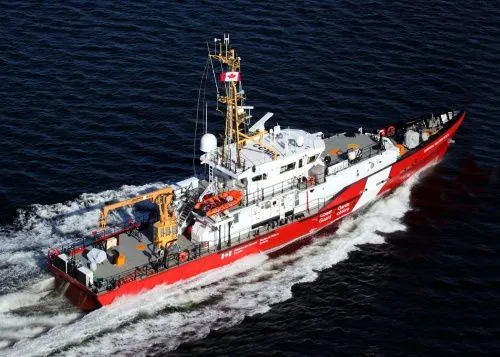
The Short-Lived Saga of the CCGS Corporal McLaren: A Costly Lesson for the Canadian Coast Guard
2025-01-05
Author: Jacob
A Fleet with Ambitious Beginnings
The CCGS Corporal McLaren M.M.V., one of the nine Hero-Class patrol vessels, was launched between 2012 and 2014. Initially, the Canadian government had proposed a fleet of twelve vessels; however, due to cost disputes with shipbuilders, this number was eventually reduced. The nine ships were constructed under a $194-million contract awarded to Irving Shipbuilding in Halifax, with the final vessel being launched in 2014.
Local economies benefited significantly from this initiative, as the project employed around 155 individuals and injected approximately $35 million into the Halifax community. Moreover, local suppliers garnered an estimated $32 million through contracts for goods and services, showcasing the potential for industrial growth through government projects.
Purpose and Impact of the Patrol Vessels
These state-of-the-art vessels were designed to replace aging patrol ships, serving as "iconic symbols of maritime safety" in Canadian waters. They played crucial roles in enforcing maritime regulations, protecting Canada’s expansive 200-mile limit from unauthorized fishing operations and supporting federal conservation programs across various regions.
The Corporal McLaren M.M.V. saw action patrolling both the Atlantic waters and the Great Lakes via a collaboration with the Royal Canadian Mounted Police, accentuating its importance in bolstering maritime security.
Technical Specifications – Built for Strength, But Not Without Flaws
Constructed based on Damen Stan’s Patrol 4207 design, the vessels were 42.8 meters long, built from steel and aluminum with a gross tonnage of 253. Despite impressive features like a fuel capacity of 7,500 imperial gallons and a remarkable nautical range of 2,000 miles, the vessels encountered serious design flaws. Early reports indicated complications with water flow within compartments and deficiencies in stability mechanisms.
The Rise and Fall of the Corporal McLaren
Tragically, the story of the CCGS Corporal McLaren took a downturn in May 2016 when it was sidelined due to severe steel corrosion in the stern. During repairs in 2018 at the Bedford Institute of Oceanography, this seemingly ordinary maintenance became a headline-making disaster. Alleged vandals cut the iron mooring cables, allowing the vessel to slip into the icy depths of the Atlantic. Despite investigations, the culprits were never identified, leaving a cloud of suspicion over the incident.
The resulting water damage led to $14 million in losses, affecting critical systems and equipment aboard the ship. The intended repairs quickly exceeded initial estimates of $11 million, culminating in the decision for scrapping the vessel in June 2024.
A Lesson Unlearned: The Future of Maritime Projects
The fate of the Corporal McLaren serves as a stark reminder of the potential pitfalls in harboring the maritime fleet. From financial miscalculations to unforeseen sabotage, this saga could prompt governmental reevaluation of procurement practices and maintenance oversight. As Canada continues to navigate its obligations for maritime security, the shadow of the Corporal McLaren may loom larger than its brief operational history.
In conclusion, while the vessel was championed as a protector of Canadian waters, its short and troubled life underscores the importance of accountability and vigilance in maritime operations. Will future projects heed the lessons learned from this costly misfit? Only time will tell.



 Brasil (PT)
Brasil (PT)
 Canada (EN)
Canada (EN)
 Chile (ES)
Chile (ES)
 Česko (CS)
Česko (CS)
 대한민국 (KO)
대한민국 (KO)
 España (ES)
España (ES)
 France (FR)
France (FR)
 Hong Kong (EN)
Hong Kong (EN)
 Italia (IT)
Italia (IT)
 日本 (JA)
日本 (JA)
 Magyarország (HU)
Magyarország (HU)
 Norge (NO)
Norge (NO)
 Polska (PL)
Polska (PL)
 Schweiz (DE)
Schweiz (DE)
 Singapore (EN)
Singapore (EN)
 Sverige (SV)
Sverige (SV)
 Suomi (FI)
Suomi (FI)
 Türkiye (TR)
Türkiye (TR)
 الإمارات العربية المتحدة (AR)
الإمارات العربية المتحدة (AR)